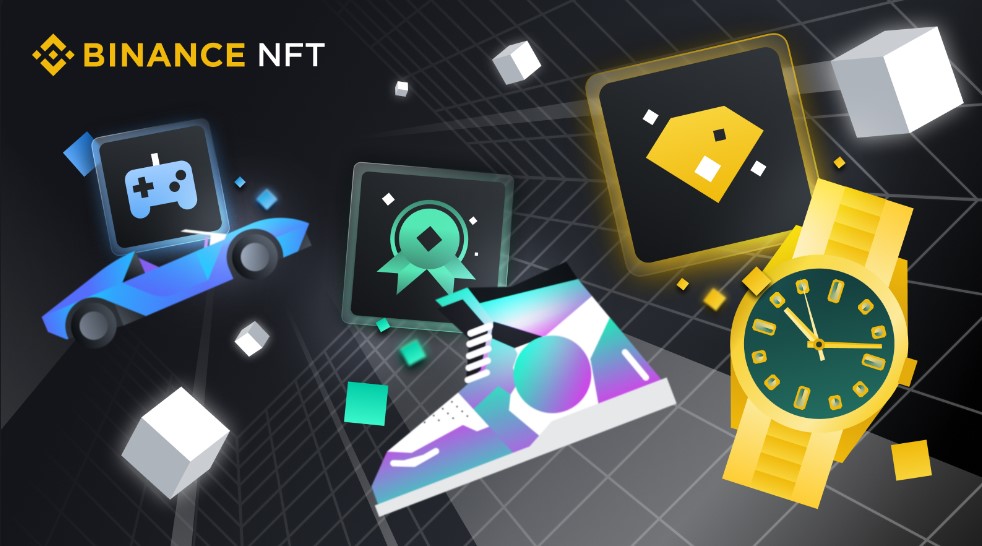While one of the biggest applications of physical NFTs is authentication, they can also enhance the consumer experience and the physical experience.

Physical NFTs are digital tokens linked to real-world assets and are often used to prove ownership of artwork, property deeds, and other assets.
Physical NFTs usually have two constituent elements, a digital element stored on the blockchain, and a physical element that you own.
While one of the biggest applications of physical NFTs is authentication, they can also enhance the consumer experience and the physical experience.
Non-Fungible Tokens (NFTs) have grown in popularity over the past few months, revolutionizing the arts, gaming, real estate, sports, and even ticketing industries.
While common application areas for NFTs are digital art, collectibles, and in-game items, physical NFTs are attracting mainstream industry attention. Well-known brands such as Adidas, GAP, and Nike have released matching NFTs for physical apparel. World-renowned artists such as Beeple and Damien Hirsh have also launched physical versions of NFT artworks. Let’s take a closer look at what exactly physical NFTs are and how to use them.
What is a physical NFT?
Simply put, non-fungible tokens (NFTs) are cryptographic tokens that represent various unique digital assets. Because they are stored on the blockchain , NFTs serve as verifiable proof of authenticity and ownership of various assets.
Physical NFTs are digital tokens tied to real-world assets. They combine digital and physical assets and can prove ownership of real-world assets (such as art, fashion merchandise, house deeds, tickets, etc.), so they are also called online and offline fusion NFTs.
Go to Binance’s Official Website
How do physical non-fungible tokens (NFTs) work?
A physical NFT consists of two parts. One part refers to digital assets issued on the blockchain through smart contracts. The other part refers to physical assets, which are usually linked to corresponding unique identifiers, such as QR codes or near-field communication (NFC) tags. Owners of the recently released Nike sneaker, CryptoKicks, for example, will also receive NFTs associated with that shoe.
While the primary use of physical NFTs is identity verification, they also play a large role in supply chains where blockchain technology can provide traceability and authentication assurance.
How to use physical NFTs?
Eliminate counterfeit products
The biggest advantage of physical NFTs is that they can prove authenticity and provenance. For many physical goods that are easy to counterfeit, physical NFTs are a very valuable tool for consumers and manufacturers alike, and can put an end to counterfeiting.
Businesses can use NFC technology or QR codes to link product serial numbers to NFTs, or link physical items to NFTs, to help confirm the authenticity of physical products and track their history. Digital records of products are kept on the blockchain, and it is almost impossible to tamper with or counterfeit products.
Increase transparency
Sometimes it can be difficult for buyers to navigate the shopping experience of used collectibles. This is especially true when the price history and market value of used items are unclear. Binding NFTs to these items gives buyers a complete overview of the item’s transaction history.
Improve the physical experience
Members of the exclusive online community have access to various virtual experiences, exclusive information and unique privileges, and NFT membership has become the key to entering the exclusive online community. Physical NFTs can function in a similar way, but the value you get from them is entirely based on the real world.
Event tickets are a great example of how physical NFTs can transform physical experiences. Using NFT not only helps to solve the problem of industry forgery and ultra-short-term transactions. And there are additional perks for ticket holders, such as event airdrop tickets and exclusive merchandise.
Help brands reach more target audiences
The past decade has seen a major shift in consumer behavior, with each generation embracing the digital world more than the last. Big retailers like Franck Muller, Nike, Tiffany and more are pairing NFTs with their physical counterparts to attract digital natives and reach a wider target audience.
Conclusion
As blockchain technology and Web3 continue to evolve, physical NFTs have the potential to seamlessly connect our digital and real lives by changing the way we interact with the real world. For example, in the future you might be able to buy an online-offline fusion car that both drives in the driveway and resides in your digital wallet, giving you virtual access privileges. Because the car is connected to your digital wallet, you can rent the car or use it as collateral in financial apps, all without the need for a middleman. In addition to the financial benefits of resale, these benefits can also increase the value of owning a physical NFT.
Go to Binance’s Official Website
Entering the NFT field
Welcome to discover the exclusive launch of premium NFT collectibles through Binance NFT. Artists, digital creators and NFT enthusiasts come together here to trade digital collectibles. For the latest news on Binance NFTs, follow Binance’s Twitter account.
Want to be the first to know when Binance releases the weekly IGO drop and exclusive mystery box?
Please check Binance official website or contact the customer support with regard to the latest information and more accurate details.
Binance official website is here.
Please click "Introduction of Binance", if you want to know the details and the company information of Binance.





Comment by Hans
April 24, 2024
as I am trading here various assets, for me it's the most important feature. i mean, flexibility in tradable markets. i alternate trading styles, meaning that sometimes I trad...